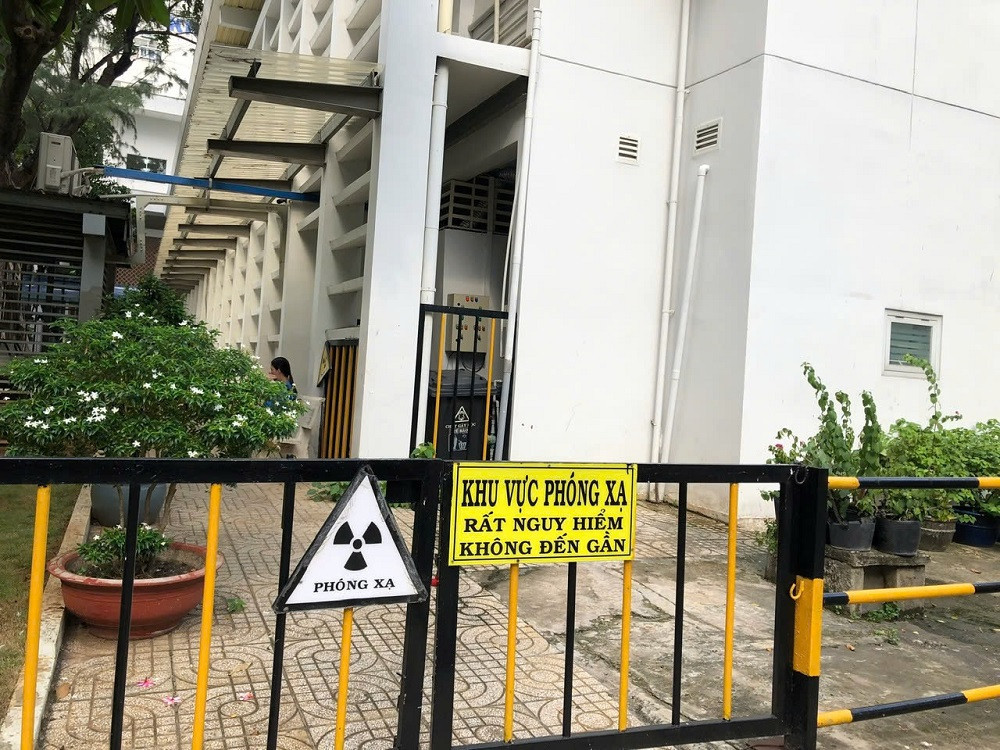Severe supply limitations
Currently, only three hospitals in the southern region are authorized by the Ministry of Health to perform PET/CT scans: Cho Ray Hospital, Ho Chi Minh City Oncology Hospital, and Military Hospital 175.
These institutions rely solely on Cho Ray’s cyclotron system for their supply of the radiopharmaceutical F-18 FDG, which is critical for conducting PET/CT scans.
The supply issue is most acute at Military Hospital 175, which receives a limited number of radiopharmaceutical doses from Cho Ray Hospital and is only able to perform 7-8 PET/CT scans per day.
At the Oncology Hospital, the situation is similarly dire, with just enough radiopharmaceuticals for 7-9 scans daily, and patients often waiting up to 10 days for their turn.
Even Cho Ray itself, which produces the radiopharmaceutical, is struggling to meet demand, as it must share its limited supply with other hospitals. The cyclotron at Cho Ray is old and prone to breakdowns, which further exacerbates the delays for patients in need of urgent cancer diagnostics.
A second facility, operated by Rang Dong Medical Corporation, was supposed to alleviate some of the pressure. However, despite being touted as the most modern system in Southeast Asia, this facility has yet to begin production due to unresolved legal issues.
An aging cyclotron and increasing demand
According to Dr. Nguyen Xuan Canh, head of the Nuclear Medicine Department at Cho Ray Hospital, the hospital’s cyclotron is currently producing an average of 28-30 doses of F-18 FDG per day, with about half of these doses being distributed to the Oncology Hospital and Military Hospital 175.
“Our cyclotron has been in operation for many years, and we’re limited in how much we can produce. If we push it too hard, we risk damaging the machine,” Dr. Canh explained.
In the event of a breakdown, repairs and maintenance often require waiting for parts to be imported from overseas, leaving patients with no alternative but to wait until the system is operational again.
PET/CT scans are highly effective in diagnosing cancers that involve glucose metabolism, as the radiopharmaceutical F-18 FDG is able to detect these cancers at the cellular level. This technique is particularly valuable for detecting early-stage cancers and monitoring the effectiveness of treatment.
However, other imaging techniques such as CT scans, MRI, ultrasound, and endoscopy can also be used for diagnosing and monitoring cancer, depending on the type and stage of the disease. In many cases, doctors may turn to these alternative methods when PET/CT scans are not available.
Ho Chi Minh City needs three cyclotron systems
Nguyen Hai Nam, Deputy Chief of Staff at the Ho Chi Minh City Department of Health, emphasized that radiopharmaceuticals like F-18 FDG have a very short half-life (less than 12 hours), which means they must be used immediately after production.
This makes it impractical to transport the radiopharmaceuticals from other regions, so the city’s hospitals must either produce them on-site or source them from nearby facilities.
Currently, some hospitals are hesitant to invest in PET/CT equipment due to the uncertainty surrounding the supply of radiopharmaceuticals. Dr. Canh noted that if Ho Chi Minh City had at least three cyclotrons, the situation would improve significantly, allowing hospitals in neighboring provinces to purchase PET/CT machines and receive a steady supply of radiopharmaceuticals from the city.
For now, hospitals in Ho Chi Minh City must continue to rely on the limited supply from Cho Ray Hospital. Meanwhile, the Department of Health is working with relevant authorities to resolve the legal issues preventing Rang Dong’s facility from starting production.
A plan for future expansion
In response to the ongoing shortage, the Department of Health is developing a proposal to mobilize private investment in the city’s healthcare sector for the period 2024-2025 and beyond.
This includes a project led by the Oncology Hospital to construct a cyclotron facility dedicated to producing radiopharmaceuticals, as well as a proton therapy center for advanced cancer treatment.
Experts agree that any future investments in PET/CT technology must include provisions for on-site radiopharmaceutical production to avoid the current situation, where hospitals are forced to operate at reduced capacity due to supply shortages.
Khanh Hoa – Bach Duong
